Ficuses "Melanie": features, tips for care
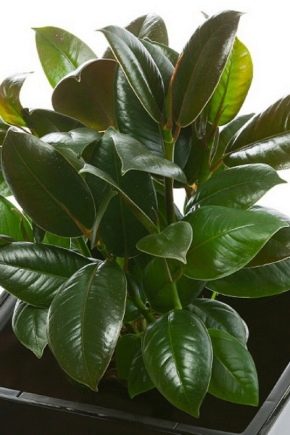
Ficuses, including Melanie, are one of the most suitable plants for beginner growers. They are unpretentious, but at the same time they are able to decorate any room. Nevertheless, when purchasing a ficus, you need to take into account its features, and care tips will always be useful. It has long been believed that ficus brings positive energy, harmony and understanding to the house.

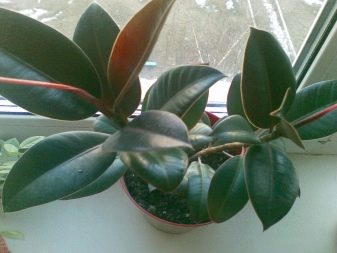
Peculiarities
Ficus "Melanie" is a small plant. But if it does not strive upwardly, and its height reaches half a meter, then such a ficus grows beautifully in width, turning into a lush, but compact bush. With this, the rubber-bearing cactus is very convenient for placing on window sills, shelves, racks.
Despite the fact that the ficus grows small in the house, in nature it can grow several meters high. At home, the ficus does not bloom, but it compensates for this with abundant greenery. The ficus of this species is also called variegated or elastica, like some others that resemble Melanie. The plant quickly grows overgrown with fresh leaves, while the old ones are well preserved. The leaves have a dense structure, elongated shape, reaching 15 centimeters in length and about 6 in width. The leaves are glossy on top, have a rich green color.
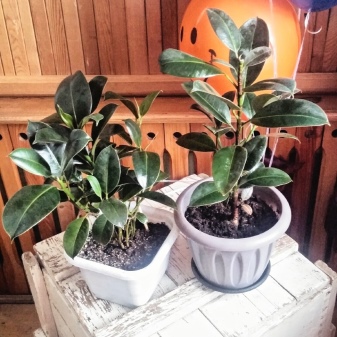
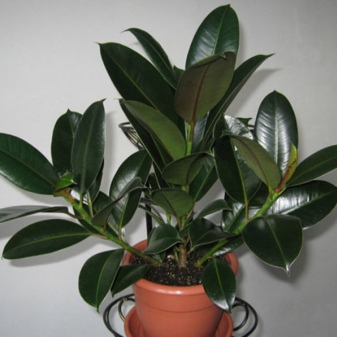
When purchasing a ficus, you need to take a young specimen, it will take root faster and better. Better to bring a new "pet" into the house in the spring or summer. This is the optimal time for transplanting, planting and for the flowers to take root well in new conditions. When buying a plant, you need to look well, the leaves should be smooth and glossy, without any damage or spots. You can run your hand over the leaves, they should adhere well to the stem.
Ficus loves light, but excessive sun exposure may not be good for foliage. Therefore, you need to choose a place that is illuminated, but with diffused rays. In winter, additional lighting in the form of lamps will be required for several hours for the full development of the plant.
Comfortable temperature for ficus is from 20 to 25 degrees. On hot summer days, he will need more frequent spraying, and the casting needs to be wiped periodically so that they always look beautiful. In winter, the temperature should not drop below 15 degrees.
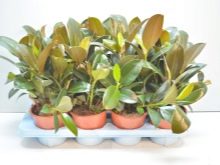


How to care?
In order for the plant to always please with its appearance and develop well, it is necessary to provide it with proper care at home.
Before planting a plant, you need to prepare the soil. There is a special potting mix for ficus in stores. But you can cook it yourself, taking for this in the same proportions humus, peat, sand. Be sure to place drainage from pebbles and expanded clay on the bottom. Excess moisture should not stagnate in the roots. Ficus prefers loose, breathable soil. But the older the plant, the better you need to compact the soil by adding turf to it.
In no case should the soil be clayey.
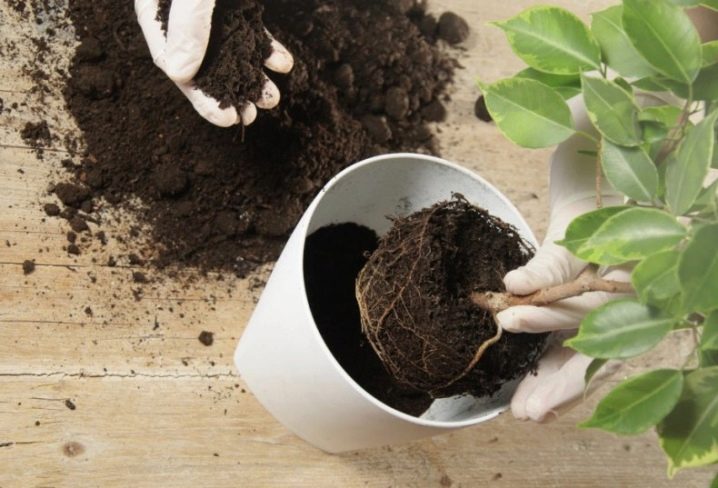
Top dressing
Any dressing should be done on the day of watering or the next day when the soil is still wet. This is done monthly in the summer and spring. Mineral fertilizers are best purchased in a store, they contain all the necessary substances. In winter, the plant does not need to be fed. You can also not fertilize immediately after transplanting. You need to give the ficus at least a month so that it takes root in a new place.

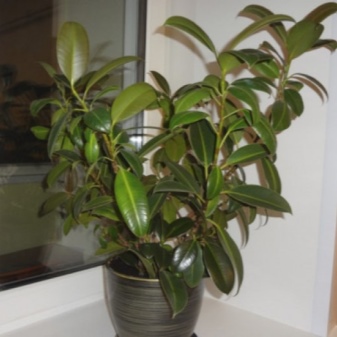
Watering
In the case of ficus, there is no need to follow the irrigation schedule, however, criteria such as temperature, humidity, illumination should be taken into account. So, if the plant is on a windowsill, where most of the sun's rays, it will need watering twice as often as the ficus that is located in the back of the room. It is better to check the need of the plant for watering by touch. To do this, it is enough to lightly touch the ground. If grains remain on the fingers, you can wait with watering, and if the earth, with a slight pressure on it, does not remain on the finger, then it is time to moisten the flower. In the summer, you need to constantly keep the soil moist.
In hot weather, more frequent watering is required, but if excess water has accumulated in the pan, it is removed. But in winter, you need to be careful with watering. The plant does not need frequent water supply, and the flower needs to be moistened as the soil dries. Spraying will be needed on hot summer days and in winter with strong heating.
Both watering and spraying are carried out with settled or filtered water.


Disease and pest control
Even with the best care, no plant is immune to pests and diseases. There are simple signs that indicate that you need to be more careful about the plant: change the lighting or the amount of watering, temperature or soil.
- When foliage falls, there may be several reasons: rare or, conversely, frequent watering, poor illumination, a sharp change in temperature. You can get rid of this problem by changing the basic components of plant care.
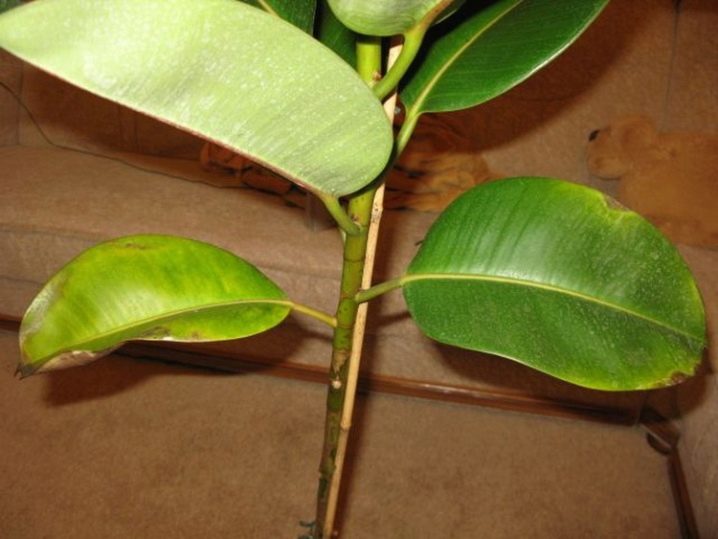
- If the foliage has turned yellow, it is possible that there is an excess of salts in the ground or the roots have begun to rot. A way out of this situation can be a change of soil and the removal of rotten root areas.
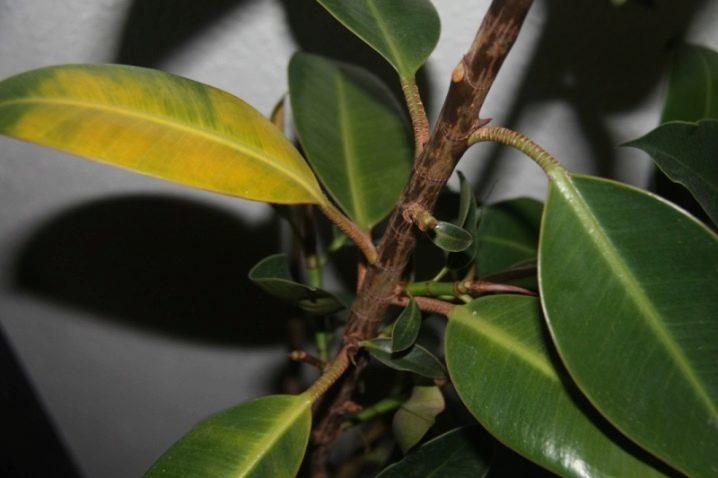
- If the ficus is not growing, this means that it needs more light or fertilizer. Transplanting into a larger pot can also help.
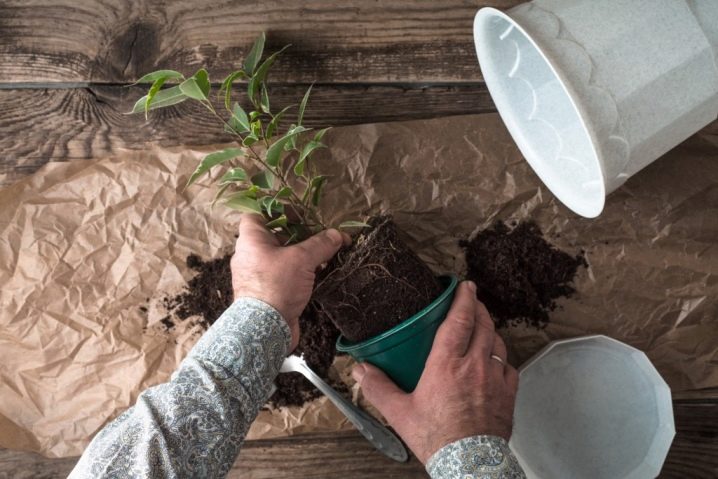
- There are pests that attack the plant, drink juices, because of which it dies. If the ficus affects the scabbard, you need to treat the leaves with soapy water. Particularly affected areas should be trimmed.

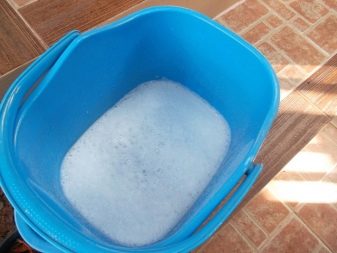
- The spider mite is afraid of frequent spraying and hygiene procedures in the form of a shower or wiping the foliage.


- If the plant is occupied by thrips, you need to completely change the land, wash the pot, treat the ficus with special preparations (for example, Aktellik or Fitoverm). The plant must be removed for several days away from others so that infection does not occur.
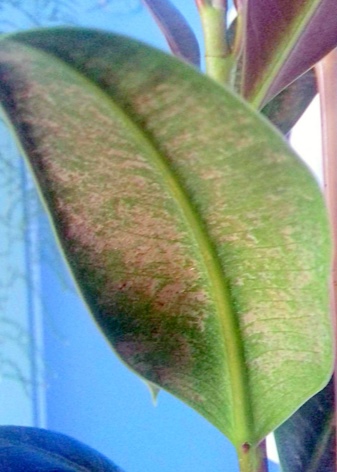

Pruning
Pruning is done in early spring. Each stem is cut by five centimeters. From this, the plant will sprout new shoots and will be more magnificent. In this case, you need to cut the stems with a sharp pruner or garden shears. Thin stems are at right angles and thick stems are at 45 degrees. Cut off the stem just above the future bud. Periodically, the plant needs sanitary pruning, while dried, yellowed leaves are removed, the stems are pruned.
If the plant has been affected by a disease or pests, and it needs to be given a sharp impetus for development, you can sparingly cut off the stems almost entirely, and a new branchy plant will soon grow.
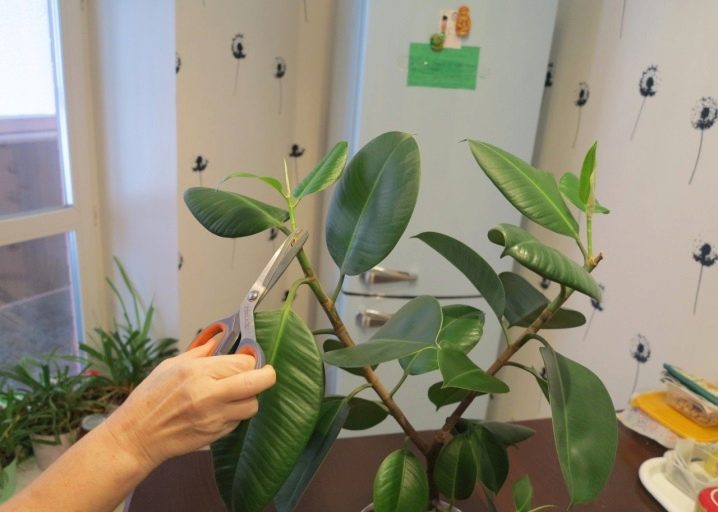
Transfer
As it grows, the ficus is transplanted into a pot slightly larger than the previous one. So the plant gradually develops and grows correctly. If a small sprout is planted immediately in a large pot, then the roots will intensively begin to develop, and the aerial part will greatly lag behind in development.
While the plant is young, it is recommended to replant it annually. A plant that is more than five years old needs a transplant as needed. But at the same time, every year you can renew the top layer of the earth, deepening by about five centimeters. The fact that it is time to transplant the ficus can be understood by the roots, which begin to show through the drainage holes or through the top. And besides, the earth will dry out very quickly, even if the ficus is watered in a timely manner.
Before transplanting, the ficus needs to be watered well, and in the meantime, prepare a new container, slightly larger than the previous one. Lay a drainage made of expanded clay, brick fragments, and small pebbles at the bottom. Then add some store-bought or home-made nutrient soil. Then the ficus is carefully removed from the pot along with the soil and transferred to a new pot. Then the remaining space is filled with soil, after which the plant is watered.
Within a month, no manipulations are performed with the ficus, they are not cut off, they are not fed.
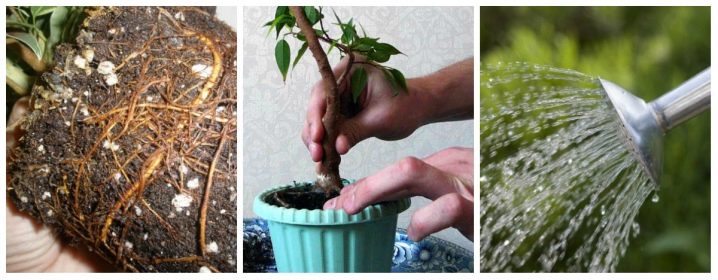
Reproduction methods
Ficus "Melanie" can be propagated in several ways, and it is better to do it in the spring. The most common methods that are easily applied at home and give a positive effect are with the help of apical or lateral shoots.
Shoots are cut so that at least three sheets remain on them. Places of cuts of ficus are not lubricated with anything, but placed in a container with water. After the milky juice flows out, the water is changed to clean. The container is covered with a transparent cap. There it will be until the roots appear. The cap should be removed periodically to allow air access. For the same purpose, you can make several holes in the cap.
To speed up the appearance of roots, you can add a drug that stimulates their growth. When the roots appear, the plant must be placed in a container with prepared soil. This method is more effective.
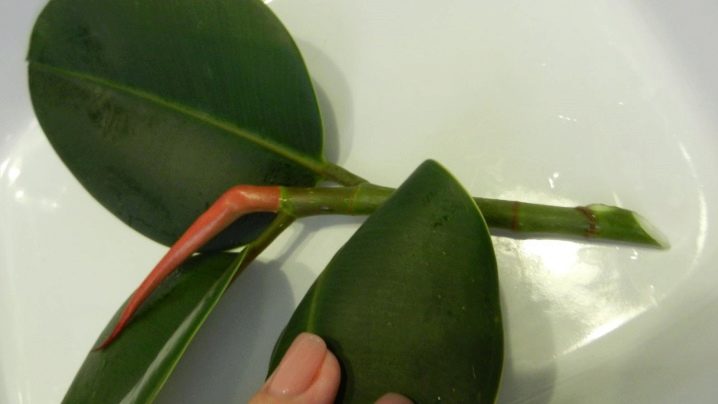
However, some growers propagate ficus with air layers. To do this, an incision must be made on the stem. Insert a thin stick into it, overlay it with peat, then wrap it with polyethylene. This is a long process, and the roots may appear in a month, or even two. We'll have to be patient. When the root grows through the peat and is visible, the stem is carefully cut off along with the new root and transplanted into a pot with prepared soil.
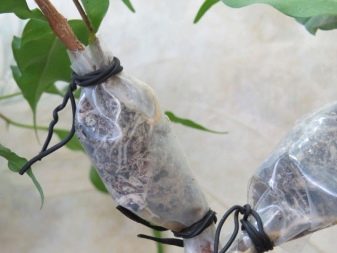
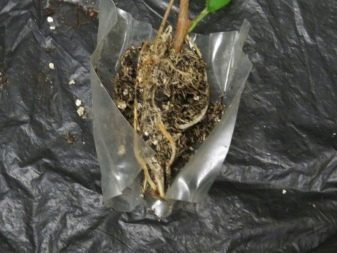
For more information on caring for the Melanie ficus, see the next video.































The comment was sent successfully.